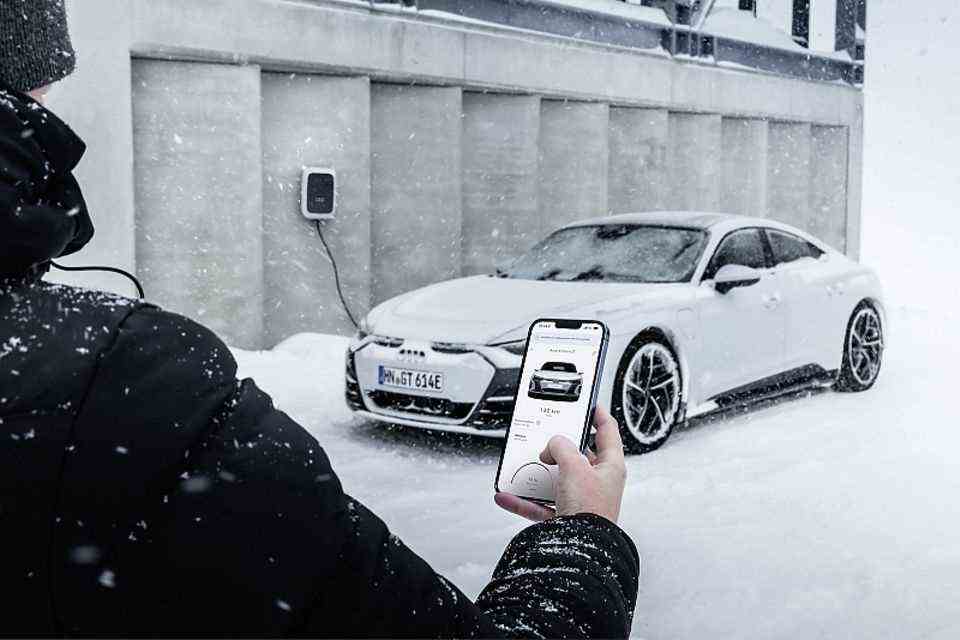Electric cars: recharging in winter
Every kilometer counts
Loading in winter
© press-inform – the press office
Electric cars have a problem: charging takes significantly longer than refueling with liquid fuel. But there is another hurdle, depending on the season, because in winter the electric range slips into the basement faster than hoped. If you follow a few tips, you can still get the maximum distance out of an electric vehicle or plug-in hybrid.
In the case of a vehicle with a combustion engine, the most interesting thing in winter is the slippery road or whether the right music is booming out of the speakers. It looks completely different with an electric car, because the electric range is considerably reduced at temperatures around or even below zero. Depending on how many electrical consumers are switched on, you can quickly subtract 30 to 40 percent of the prospective range and then things can get tight. Seat heating, heated rear window and air conditioning sometimes have a noticeable effect on the desired range. One or the other driver of a new electric model experiences a nasty surprise in their first winter. The fact that the reloading process can then take longer than ever does not make things any easier in everyday winter life.
A few simple tips can extend the range so that you don’t break out in a sweat before reaching the finish line with the remaining time shrinking. The journey begins once more before you get in, because anyone who has their car next to a charging station or the wallbox at home should precondition their interior. This means that the app can be used to set when and at what interior temperature it should start. Nobody gets into a cold vehicle and does not have to heat up the windows, seats and interior in an energy-intensive way while driving. This is particularly interesting for the energy-intensive short journeys on which the vehicle can only heat up with difficulty. However, this only makes sense if the car is also connected to a power connection, otherwise the battery of the electric vehicle or plug-in hybrid will run out before the first meter has been covered.
Anyone who frequently travels short distances in the city center should, if possible, not charge the battery more than 80 percent in order to preserve the maximum capacity for longer ranges and to extend the service life. At the same time, a permanent deep discharge below 20 percent should be avoided if possible. On the other hand, those who frequently travel long distances can utilize the capacity of the battery pack in the underbody by up to 100 percent; but should then drive off immediately. If you park for more than twelve hours, ideally keep the charge level in the window between 40 and 80 percent in winter.
Ancillary consumers, insufficient air pressure, roof boxes or ski racks are more noticeable than in vehicles with petrol or diesel units and sometimes significantly reduce the range per battery charge. By the way: if you charge your battery at high pressure, you will stress it. If this is instead charged more slowly, this brings technical relaxation and extends the service life. In addition, it is advisable to recharge the battery pack as soon as possible after the journey when the outside temperature is cold in autumn and winter, because then the battery is still warmed up and recharges more gently and quickly. In general, it makes sense not to simply charge, but to precondition the high-voltage battery while driving. If a fast charging station is set as the destination in the navigation system, an algorithm in the on-board computer calculates the estimated time of arrival. The necessary heating or cooling power is derived from this in order to immediately use maximum charging power for a short downtime at the charging station.
Not only those who travel long distances should keep an eye on the range of the on-board computer more carefully than with a gasoline or diesel vehicle. Many models not only offer the calculated range, but also a variable forecast that is extended or reduced depending on the speed, consumers or driving program. The driver can see at a glance how far he can get at the appropriate speed or how quickly he has to get back to the charging station. These are – intelligently calculated for a short downtime – also displayed on the navigation screen.


